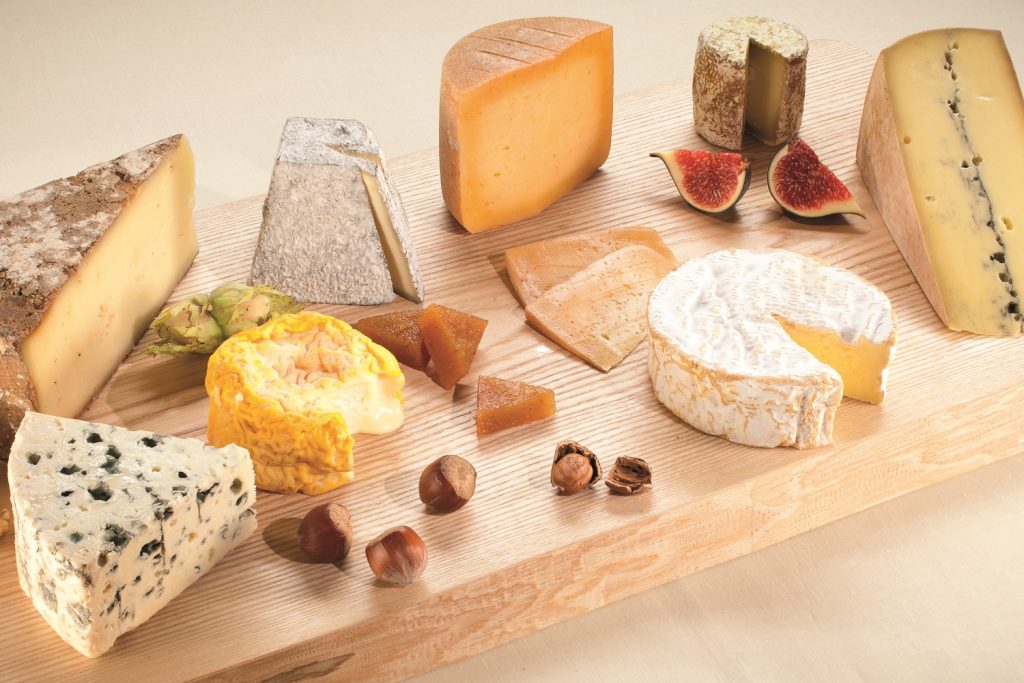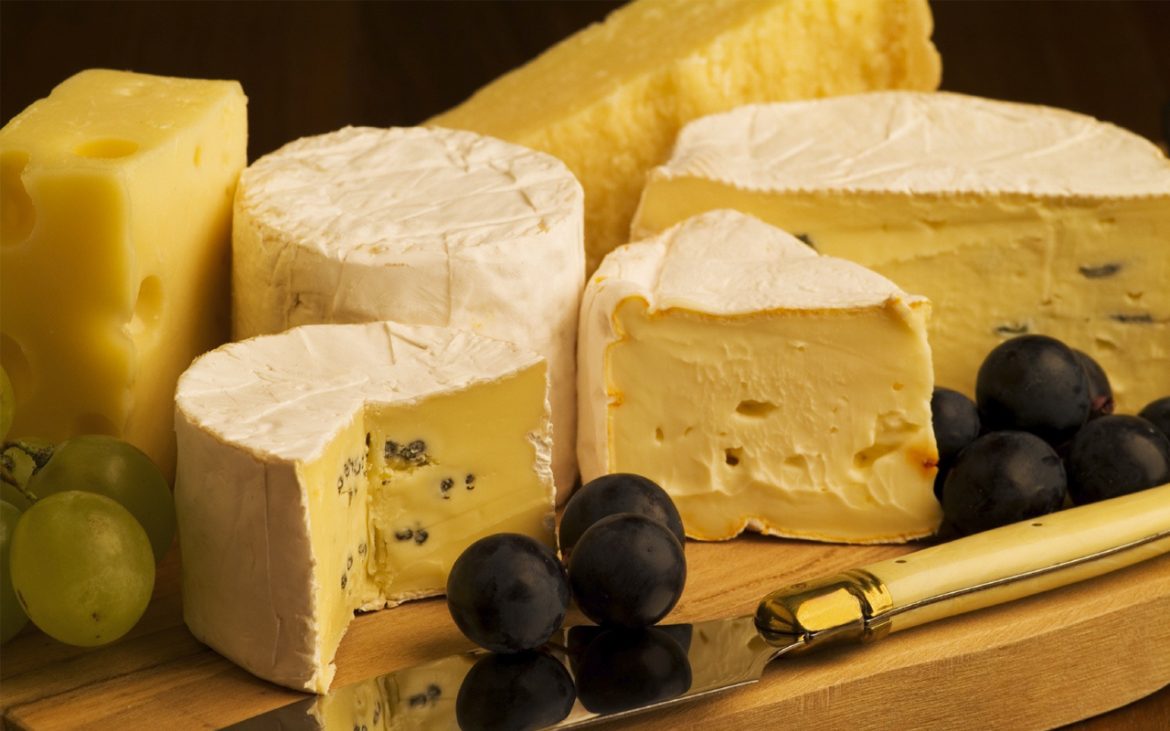In France, Fromage is not only a kind of food, but also a symbol of culture, carrying profound historical heritage and national emotions. As the largest cheese producer in Europe, France produces an amazing amount of cheese every year, a wide variety of flavors, from the soft and delicate brie cheese to the spicy and rich Roquefort cheese, each cheese carries the French people’s ultimate pursuit of quality of life. This paper will start from the history, types, production processes and characteristics of French cheese, in-depth analysis of its position in the market, popularity and consumer preferences, and discuss its cultural background, social value and commercial significance, and finally share the love and recommendation of French cheese combined with personal feelings.
First, the historical origin of French cheese
The history of cheese dates back to the Neolithic Age, around 7000 BC, when dairy products gradually became part of the daily diet as humans began to domesticate goats, camels, reindeer and other animals. At that time, in order to extend the storage life of milk, people began to try to separate the curds in milk from the whey, and make solid or semi-solid food – cheese by fermentation and salting. In France, this method of milk processing gradually developed and formed a unique cheese culture.
The word Fromage, derived from the Latin formaticus, meaning “to shape”, graphically describes an important part of the cheese making process – solidification. During the Middle Ages, European monks not only promoted the development of cheese making techniques, but also invented techniques for ripening cheese, resulting in a richer variety of textures and flavors. In France, especially in the Jura Mountains and the Alps, cheese making became an important livelihood for mountain villagers, who formed cooperative organizations to make large cheeses together and gradually developed their own unique flavors and traditions.
Second, there are many kinds of French cheese
There are many kinds of French cheese, according to incomplete statistics has more than 1,000 kinds, each cheese has its own unique production process and flavor characteristics. Based on texture and ripening, French cheeses can be roughly divided into the following categories:
Fromages a pate molle
Brie: From the Normandy region, the outside is covered with thick white mold, the inside is soft and moist, and the taste is delicate and creamy. Brie cheese is a classic French cheese, known as the “prince of cheese”.
Camembert: Also from Normandy, similar to brie, but smaller, more flavorful and covered with a slight white mildew. Camabert cheese is the star of French cheeses and is loved by consumers around the world.
Fromages bleus
Roquefort: A goat’s milk blue mildew cheese, produced in the village of Roquefort in southern France. Roquefort cheese appearance is white, with a strong salt flavor, the whole body cloth has a uniform blue-green grain, taste strong and slightly spicy. Its unique production process and flavor make it a gem of French cheese.
Fromages a pate pressee
Comte cheese: From the Jura province in eastern France, it is firm, fruity and salty, with a rich and varied taste. Contey cheese is one of the most popular hard cheeses in France and is often eaten with wine and baguettes.
Emmenthal cheese: Also known as Swiss cheese, although originating in Switzerland, it is also produced in large quantities in France. Emmanta cheese has a porous texture, a golden color and a rich taste with a slightly sweet taste.
Fromages a pate demi-dure
Neufchatel: The texture is between soft and hard, and the texture is smooth and delicate, suitable for cooking and baking.
Goat cheese (Fromages de chevre)
Chabichou: Made from goat milk, Chabichou has a strong, slightly acidic flavor that resembles a kernel. Goat cheese also has a wide consumer base and market in France.
Third, the production process and characteristics of French cheese
The production process of French cheese is exquisite and complex, and every step from milking to the finished product needs to go through many steps, and each step is crucial.

Milking and refrigeration
The first step in cheese making starts on a dairy farm. The farmer milks the cows and the milk is immediately refrigerated to ensure storage quality. Modern dairy farms employ automated milking equipment that mimics the action of manual milking, improving milking efficiency and hygiene standards.
Pasteur sterilization
Pasteurization is a key step in removing undesirable microorganisms from milk. The milk is heated to 72°C in two heating plates for 15 seconds to kill disease-causing bacteria. This step depends on the type of cheese to be processed, and some cheeses may require uncooked milk.
Solidification and forming
Curdling is the core of cheese making. Milk is curdled into curds by adding animal rennet or microbial coagulants (enzymes). The curds are formed in different molds depending on the shape of the desired cheese.
Drain and salt
The formed curds need to be drained to separate the whey to extend its shelf life. Fresh and white cheese can be eaten after draining, while other cheeses are salted to enhance flavor and prolong shelf life.
Ripening and fermentation
Ripening is a key stage in the formation of cheese flavor. Different types of cheese require different ripening times and conditions. Soft cheeses are generally matured for 10 to 60 days in a moist environment, while hard cheeses need to be stored at room temperature and in a relatively dry environment for months or even years. During the ripening process, the proteins and lactose inside the cheese are gradually broken down and transformed, producing a complex and rich flavor and taste.
French cheese is characterized by its unique production process and flavor diversity. Each kind of cheese carries the local customs and historical culture, which is a direct reflection of the French people’s pursuit of quality of life.
Fourth, the status and popularity of French cheese in the market
French cheese enjoys a high reputation and status in the global market. As the number one cheese producer in Europe, France produces a staggering amount of cheese every year, not only to meet the needs of domestic consumers, but also to export a large number of countries around the world. According to statistics, the French consume 26.5 kilograms of cheese per capita every year, second only to Denmark, Iceland and Finland, ranking first in the world.
In the market, French cheese has won a wide range of consumers with its excellent quality and unique flavor. Whether it is the delicate taste of soft cheese or the rich flavor of hard cheese, it can meet the needs of different consumers. In particular, classic varieties such as brie, Roquefort and Camabert have become the hearts of consumers around the world.
French cheese also has high added value and market competitiveness. Due to its complex and time-consuming production process, many cheeses are made by hand, so the price is relatively high. However, this does not prevent consumers from loving and pursuing French cheese. On the contrary, high quality and high prices have become one of the important sources of competitiveness in the French cheese market.
The cultural background, social value and commercial significance of French cheese
French cheese is not only a kind of food enjoyment, but also a reflection of cultural phenomenon and social value. In the eyes of the French, cheese is not only a kind of food but also a symbol of life style. They love cheese not only because of its delicious taste but also because of the deep cultural heritage and history behind it.
Cheese plays an important role in French culture. Cheese plays an important role in everything from festivals to everyday meals. In the cheese festival held regularly throughout France, people can taste a variety of delicious cheese and feel the French love and pursuit of cheese. In addition, cheese is an indispensable food for French people when they socialize and gather together. They like to share cheese with family and friends and enjoy the fun and warmth of it.

In addition to cultural value, French cheese also has important social value and commercial significance. As an important part of the French agriculture and food industry, the cheese industry contributes greatly to the local economy. It is estimated that 1.8 million tons of cheese is produced in France every year and 60,000 direct jobs are provided. At the same time, the cheese industry has also driven the development of related industrial chains, including animal husbandry, dairy processing, packaging and transportation.
In the commercial French cheese with its excellent quality and unique flavor has won a wide range of market recognition and consumer love. Many French cheese brands such as Brie, Roquefort and Camarbert have become global brands and have successfully penetrated international markets. These brands not only bring huge profits to the French cheese industry but also enhance France’s position and influence in the global food market.
Sixth, personal feelings and recommendations
As a food lover with a passion for French cheese, I am deeply attracted by its unique flavor and production process. Every time you taste French cheese, you can feel the rich emotion and historical culture contained in it. Whether it’s a soft brie cheese or a rich and spicy Roquefort cheese, I can’t get rid of it.
Here I would like to recommend a few of my personal favorite French cheeses:
Brie: As a classic French cheese, Brie cheese has won my favor with its delicate taste and rich milk flavor. Every time you taste it, you can feel the rich layers and subtle changes that are left with endless aftertastes.
Roquefort: Although the taste of Roquefort cheese is slightly spicy, it is this unique flavor that makes me deeply fascinated by it. The blue-green mildew spots and the rich salt aroma intertwine to create an indescribably delicious experience.
Camembert: Similar to brie but smaller and richer, Camembert is also one of my favorite cheeses. Every time you taste it, you can feel the rich milk aroma and delicate taste that makes people want to stop.
In addition, I would like to remind you that when you taste French cheese, you must pair it with the right wine and bread to fully experience the delicious and fun. For example, brie cheese can be paired with red wine or champagne while Roquefort cheese is more suitable for light drinks such as white wine or beer. At the same time, a freshly baked baguette is also an indispensable accompaniment when tasting French cheese. It can better bring out the delicate texture and rich flavor of cheese.
French cheese is a kind of food full of charm and emotion. It not only represents the French people’s pursuit of quality of life, but also carries profound historical and cultural deposits and social values. In the coming days, I believe that French cheese will continue to win the love and pursuit of more consumers with its excellent quality and unique flavor and become an indispensable part of the global gastronomic culture.

